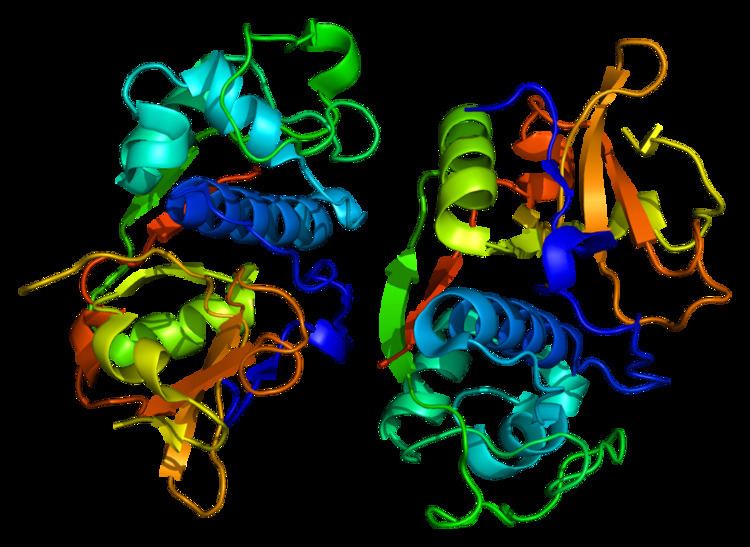Entrez 8722 | Ensembl ENSG00000174080 | |
 | ||
Aliases CTSF, CATSF, CLN13, cathepsin F External IDs MGI: 1861434 HomoloGene: 31194 GeneCards: CTSF | ||
Cathepsin F is a protein that in humans is encoded by the CTSF gene.
Cathepsins are papain family cysteine proteinases that represent a major component of the lysosomal proteolytic system. In general, cathepsins contain a signal sequence, followed by a propeptide and then a catalytically active mature region. The very long (251-amino acid residues) proregion of the cathepsin F precursor contains a C-terminal domain similar to the pro-segment of cathepsin L-like enzymes, a 50-residue flexible linker peptide, and an N-terminal domain predicted to adopt a cystatin-like fold. The cathepsin F proregion is unique within the papain family cysteine proteases in that it contains this additional N-terminal segment predicted to share structural similarities with cysteine protease inhibitors of the cystatin superfamily. This cystatin-like domain contains some of the elements known to be important for inhibitory activity. CTSF encodes a predicted protein of 484 amino acids that contains a 19-residue signal peptide. Cathepsin F contains five potential N-glycosylation sites, and it may be targeted to the endosomal/lysosomal compartment via the mannose 6-phosphate receptor pathway. The cathepsin F gene is ubiquitously expressed, and it maps to chromosome 11q13, close to the gene encoding cathepsin W.
